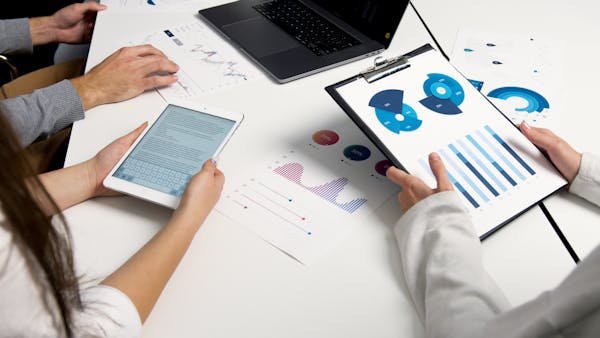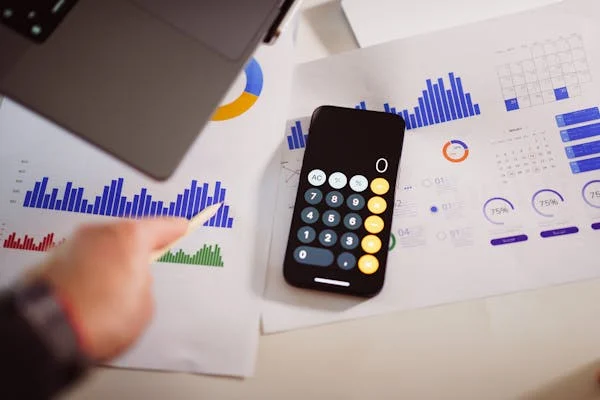Personalization isn’t just a nice-to-have. It’s now the difference between customer loyalty and quiet churn. Companies that tailor content, communication, and experiences to individual users are seeing clear, measurable gains in retention. Below, we’ll dive into 30 data-backed stats. Each one reveals the retention power of personalization, paired with deep, tactical advice for putting it into action.
1. Personalized experiences can increase customer retention rates by up to 70%
Why this stat matters
This stat shows the dramatic upside of doing personalization well. Retention is often hard-won, and a 70% boost is game-changing. It’s not about adding someone’s name to an email—it’s about giving people what they actually care about, when and how they want it.
What drives the increase
People are busy. Their attention is split. When a brand clearly understands their needs, preferences, and timing, it reduces friction. They don’t need to search around. They don’t need to translate generic offers into something meaningful. Personalization removes that extra work. It creates comfort, relevance, and trust.
Over time, this consistency makes people stick around. They feel seen. They feel served.
How to apply this
Start simple. Don’t try to personalize everything at once. Identify your high-impact user touchpoints—such as onboarding, email, or checkout—and personalize those first.
- Use behavior data to tailor your onboarding: if a user skipped certain features or clicked specific ones, guide them toward what they’ve shown interest in.
- In emails, personalize based on past purchases, not just name or job title.
- On your website, show returning users the content they engaged with most.
Use retention tracking tools like Mixpanel or Amplitude to measure which personalized flows actually result in more logins, purchases, or engagement. Then double down on those flows.
Retention improvements compound. Start small, iterate often.
2. 80% of consumers are more likely to purchase from a brand that offers personalized experiences
Why this stat matters
Personalization doesn’t just make users happy—it leads to actual purchases. That’s crucial because repeat purchases are what power retention. When someone buys again, they’re more likely to become a long-term customer.
What it tells us
People expect brands to do more than sell—they expect brands to know them. That means understanding context: what someone bought, when they bought it, and what they might want next.
The 80% figure reflects how much weight buyers place on being recognized. Generic feels forgettable. Personal feels valued.
How to apply this
One of the best ways to increase repeat purchase behavior is with personalized offers based on timing.
- If someone bought a skincare product that typically runs out in 30 days, send a reorder email around day 25.
- If someone bought running shoes, suggest complementary items like socks or insoles.
- Use customer data to create email segments—repeat buyers get different messaging than one-time buyers.
Another tip: use dynamic content blocks on your homepage. Show different offers or messages to logged-in users vs. new visitors. Loyalty feels natural when the site seems to remember you.
Measure how often personalized messages convert vs. standard ones. Use that data to improve your segmentation over time.
3. 44% of consumers say they are likely to become repeat buyers after a personalized shopping experience
Why this stat matters
This stat tells us that nearly half of consumers connect personalization directly to their buying habits. That’s a huge number. It means personalization isn’t just a warm fuzzy—it directly shapes behavior.
The psychology behind it
Buying is emotional. When people feel a brand understands their preferences, they develop a sense of trust and comfort. It’s similar to walking into a local store where the owner remembers your last visit. That sense of familiarity creates a reason to come back.
A personalized experience makes the customer journey smoother. It shows that the brand is putting effort into serving that person—not just selling at them.
How to apply this
Make sure your shopping experience reflects what you already know about the customer.
- Show personalized product recommendations based on browsing and past purchases. Tools like Rebuy or Dynamic Yield help here.
- Use past behavior to influence layout. If someone often shops by category A, show that first next time.
- Implement account-based preferences. Let users save favorite products or brands. Show those first.
Don’t forget cart reminders. But go beyond generic ones. Mention what’s in the cart, suggest similar items, or offer a relevant discount tied to their purchase history.
The key is to reduce the decision-making burden. When a user sees what they want faster, or gets helpful nudges, it naturally leads to repeat buying.
4. Personalized email campaigns deliver 6x higher transaction rates than non-personalized ones
Why this stat matters
This stat doesn’t just hint—it shouts. Personalized emails aren’t just a bit better. They convert at six times the rate. That’s a major difference in performance, especially when email is still one of the top retention tools across industries.
What causes this lift
Personalized emails feel like they were written just for the reader. When someone gets an email that speaks directly to their behavior, interests, or journey, they’re far more likely to take action. It could be a relevant product suggestion, a reminder about something they looked at, or a discount that ties into a previous interaction.
Generic emails are easy to ignore. Personalized ones make people feel remembered. That attention to detail is what keeps them engaged and buying.
How to apply this
Start with segmentation. Divide your list into smart groups based on actions—like recent buyers, frequent browsers, or cart abandoners. Then tailor messaging for each group.
- Send abandoned cart emails that include the actual product image, price, and one-liner benefit.
- For repeat buyers, send “you might like this too” emails using collaborative filtering.
- For inactive users, re-engage with content based on their past interest instead of a generic “we miss you.”
Use tools like Klaviyo, Customer.io, or ActiveCampaign to automate these flows. But always test subject lines, content blocks, and timing to see what resonates most.
Finally, look beyond just sales. Personalized content updates, event invites, or educational emails can all help build loyalty—if they feel relevant.
5. Companies using advanced personalization see an average 20% increase in customer lifetime value (CLV)
Why this stat matters
Customer lifetime value is one of the clearest indicators of how valuable a customer is over time. A 20% increase means that personalization isn’t just good for short-term conversions—it has long-term financial impact.
Why CLV rises with personalization
When you personalize across multiple touchpoints—emails, support, product recommendations, loyalty programs—you keep customers engaged longer. They stick around. They buy more. They refer others.
It’s a snowball. Each positive, relevant experience builds on the last. Over time, you create deep customer relationships. That drives loyalty, not just single purchases.
How to apply this
Focus on building personalized journeys, not just campaigns. Think in terms of the entire customer lifecycle.
- Personalize onboarding to highlight the features that match what the user signed up for.
- In-product prompts should adapt based on user behavior. If someone hasn’t explored a key feature, guide them with a tailored message.
- Offer loyalty points or discounts based on engagement levels—not just purchases. This shows you’re watching, and you care.
Also, track your CLV by segment. Are customers who receive personalized content worth more over 6 or 12 months? If yes, keep optimizing those paths.
When personalization becomes the default—not the exception—you unlock deeper loyalty and higher value over time.
6. 63% of consumers stop buying from brands that use poor personalization tactics
Why this stat matters
This stat is a warning. Personalization done wrong isn’t just ineffective—it drives customers away. It’s not a neutral action; it’s a risky one if not executed properly.
Why poor personalization backfires
Imagine getting a birthday coupon for a product you already bought last week. Or being recommended something totally irrelevant to your interests. These moments don’t just fall flat—they create friction. They tell the customer, “We’re not paying attention.” That breaks trust.
Personalization is supposed to make things easier and more relevant. When it doesn’t, it adds confusion and noise.
How to apply this
Step one is to make sure your data is clean and current. Don’t personalize based on outdated or incorrect behavior. Customers notice.
- Regularly audit your data sources. Are you syncing product usage, purchases, and support tickets correctly?
- Don’t over-segment based on assumptions. Test messaging first.
- Avoid “fake personalization” like just adding a name to a generic message. That won’t cut it.
When you do personalize, double-check context. For example, don’t send a product suggestion for something the customer just returned. Or don’t upsell something that isn’t compatible with what they already use.
Build feedback loops. Let users tell you what they like and don’t. Use that feedback to update personalization models.
Good personalization feels helpful. Bad personalization feels lazy. And people will leave if they feel misunderstood.
7. 91% of consumers say they are more likely to shop with brands that provide relevant offers and recommendations
Why this stat matters
This stat tells us just how powerful relevance is. Nearly everyone prefers brands that offer something tailored to them. Not kind of relevant. Not generally useful. Actually tailored. When that happens, it removes friction and boosts trust.
What this means in practice
Consumers are flooded with messages every day. They ignore most of them. But when an offer feels spot-on—timed right, matches their interests, or solves a known need—they pay attention.
Relevance also signals that the brand “gets” them. That creates an emotional pull. Shopping stops feeling like a transaction and starts feeling like a helpful experience.
How to apply this
Start by building strong behavioral triggers. Use data points like:
- Products viewed
- Time spent on certain categories
- Purchase frequency
- Seasonal timing
Then layer in smart automation.
- Send reminders or offers based on browsing history. If a user looked at cameras three times, follow up with camera bundles.
- Recommend accessories or upgrades based on past purchases.
- If someone always shops in March, start sending gentle nudges in late February.
You can also personalize by journey stage. A new customer needs reassurance and product guidance. A long-time buyer might appreciate loyalty discounts or early access.
The golden rule: show what matters when it matters. Don’t try to be relevant all the time—just at the right moments. That’s where the magic happens.
8. Retention rates are 1.5x higher for companies that use behavioral personalization
Why this stat matters
Retention is hard. Customers can leave quietly, without a word. But companies that personalize based on what users actually do—not just what they say—see much better retention. This stat shows just how impactful behavior-based personalization can be.
Why behavior beats assumptions
People often say one thing but do another. That’s why surveys or demographic data only tell part of the story. Behavior shows intent. If someone browses comparison pages, they’re likely close to a buying decision. If someone logs in less often, they may be slipping away.
Behavioral personalization lets you respond in real time to subtle changes—before a user churns.
How to apply this
Track key behavioral signals. Depending on your business, these might include:
- Frequency of logins
- Abandoned carts
- Scroll depth on pages
- Actions skipped during onboarding
- Interaction with support or help docs
Use that data to create meaningful messages. For example:
- If someone hasn’t completed setup, trigger a help email or in-app prompt with a one-click shortcut.
- If someone is highly engaged, offer referral opportunities or exclusive perks to reinforce their connection.
- If usage is dipping, use subtle win-back messages—like “Need help getting the most out of your plan?”
You can use tools like Segment, Heap, or custom event tracking to collect this data. But don’t stop there—build simple rules into your CRM or email platform to act on that data fast.
The more your outreach aligns with real behavior, the more trusted—and retained—your customers will feel.
9. Personalized website experiences boost repeat visits by up to 43%
Why this stat matters
Getting someone to your site once is hard. Getting them to return—again and again—is even harder. But when the experience feels personalized, people are much more likely to come back. That makes a huge difference over time.
Why this happens
A personalized website doesn’t just look good. It feels like it remembers you. It puts relevant content, products, or features front and center. That cuts down on decision fatigue. People don’t have to search or dig—they see what matters instantly.
It’s like walking into your favorite coffee shop where they already know your order. It’s smooth. Familiar. Rewarding.
How to apply this
Use personalization tools to dynamically adapt parts of your website for returning users.
- Show recently viewed products on the homepage.
- Feature blog content related to a user’s previous reads or downloads.
- Reorder menu options based on past navigation paths.
- Change the hero banner based on what the user last browsed.
If you run a SaaS platform, personalize dashboards based on role, plan level, or previous activity. Show the features that user is most likely to use next—not the generic overview.
Even small touches matter. Greeting logged-in users by name, remembering preferences, or surfacing relevant help docs—these all create a sense of connection.
And don’t forget speed. Personalized sites feel faster—not because of tech, but because they reduce decision time.
Measure return visit rate, session length, and click-throughs on personalized elements. Tweak based on what drives deeper engagement.
People come back to what feels familiar and rewarding. Personalization makes both happen.
10. Brands that personalize web experiences see a 19% uplift in customer satisfaction
Why this stat matters
Customer satisfaction isn’t just about great support or fast delivery. It starts way earlier—right when someone lands on your website. This stat shows that personalization can quietly and powerfully improve how satisfied users feel, just by shaping their online experience to fit their needs.
Why satisfaction rises
A website is your storefront. When it adapts to the user—offering the right content, remembering preferences, streamlining the path to action—it creates a sense of care. People don’t feel like they’re one of thousands. They feel like the site was built for them.
That emotional response—feeling understood, seen, and valued—directly feeds into satisfaction scores.
How to apply this
Start by identifying your most common user segments. For example:
- First-time visitors
- Logged-in users
- Returning customers
- Customers with pending support tickets
Then personalize accordingly.
- First-timers might see top-rated or best-selling content to build trust.
- Returning users could get a quick “Welcome back” message and shortcut to where they left off.
- Logged-in users can see order history, loyalty points, or curated product picks.
Use tools like Google Optimize, Optimizely, or even dynamic CMS rules to change what users see.
And here’s a small but impactful trick: adjust language. If someone’s from the U.K., show “favourites” instead of “favorites.” If their last product was for kids, use family-friendly tone next time.
Track CSAT or NPS scores by segment. See if users who receive more personalized touches rate their experience higher. If so, keep refining those paths.
Satisfaction doesn’t come from bells and whistles. It comes from relevance, ease, and trust—all of which personalization delivers.
11. 75% of customers are more likely to stay loyal to a brand that understands them on a personal level
Why this stat matters
Loyalty is what keeps companies alive. It’s cheaper to keep a customer than to find a new one. This stat shows how important “being understood” is to building that loyalty. It’s not just about price or convenience—people want to feel like a brand truly gets them.
What it means to “understand” a customer
Understanding is about context. It’s about remembering preferences, anticipating needs, and removing friction. If a brand repeatedly delivers relevant experiences, people stay. If not, they leave—even if the product is good.
Personal understanding turns transactions into relationships. It builds emotional loyalty, not just repeat purchases.
How to apply this
First, map out your customer journeys. Where do customers drop off? Where do they repeat actions? What questions do they have at each step?
Then use personalization to plug gaps.
- Send relevant content after a support call to show you’re listening.
- Recommend products based on a combination of browsing behavior and past purchase frequency.
- Use surveys or short quizzes to let users express preferences, then actually use that data.
You can also use personalization to address frustrations. If someone has had a return, show helpful sizing guides next time. If a user downgraded their plan, ask why—and follow up with tips to get more from their current tier.
The key is feedback loops. Use every interaction to learn, and every learning to shape the next interaction.
Loyalty grows when customers feel understood without needing to explain themselves each time. That’s the quiet power of good personalization.
12. Personalized mobile push notifications have 8x higher engagement rates than generic ones
Why this stat matters
Push notifications can either be incredibly useful or incredibly annoying. This stat shows that when they’re done right—personalized, timely, relevant—they don’t just get noticed. They get action. Eight times more, in fact.
Why personalization makes the difference
Mobile users are fast-moving. They scan, they swipe, they ignore. Generic notifications get deleted or blocked. But when a push notification reflects the user’s behavior, timing, or preferences, it feels like a helpful reminder—not an interruption.
It’s about context. When you send the right message at the right time, people respond.
How to apply this
Use behavioral triggers to send smart push notifications.
- If someone abandoned their cart, send a reminder with the exact product and a gentle nudge (“Still thinking about this?”).
- If a user hasn’t opened your app in five days, remind them of a feature they use most.
- If someone hits a milestone—like a 10th purchase—send a quick thank-you with a surprise perk.
Also, personalize timing. If a user always engages in the evening, don’t send a message at 9 a.m.
Tools like OneSignal or Braze allow you to set up dynamic content blocks and schedule messages based on past engagement.
One caution: don’t overdo it. Personalized doesn’t mean frequent. If every message is relevant, people won’t mind. But if even one feels random or annoying, users may disable notifications altogether.
Track open rates, click-throughs, and post-click actions. A personalized push message should lead to a meaningful interaction—not just a tap.
When done right, personalized push notifications become part of the user’s rhythm, not a disruption.
13. 52% of customers expect personalization in all digital interactions
Why this stat matters
This is no longer a “nice bonus.” Over half of customers now expect personalized experiences as standard. That changes the game. If your brand doesn’t deliver, you’re not just missing out—you’re falling behind.
What’s driving this expectation
People are used to Netflix showing movies they like. Amazon showing relevant items. Spotify learning their taste. That expectation carries over to every app, site, and service.
When personalization is missing, it feels like something’s broken. The absence is noticeable. And noticeable gaps lead to lost attention, or worse, lost trust.
How to apply this
The key is to make personalization consistent across all touchpoints—not just one or two.
- On your website: show tailored offers, product recommendations, or content based on user behavior or login status.
- In your app: adapt screens based on usage frequency or journey stage. A new user should see tips. A power user should see shortcuts.
- In email: avoid one-size-fits-all newsletters. Break your list into groups and tailor the messaging.
- In support: if a customer reaches out, show that you know their past issues or purchases. Avoid making them repeat themselves.
Also, keep personalization subtle. Not every message has to say the person’s name. Relevance matters more than formality.

Train your teams, too. Sales, support, and marketing should all be working from the same customer view. A unified experience feels seamless—and that’s what today’s customers expect.
When half the market expects you to personalize and you don’t, you’re not just behind. You’re invisible.
14. AI-driven personalization can increase customer retention by 25–30%
Why this stat matters
This stat shows that personalization at scale isn’t just possible—it’s powerful. AI makes it easier to give each user a unique experience without manual work. And the payoff? Up to 30% better retention. That’s massive over a year or two.
Why AI works so well
AI systems learn quickly. They analyze huge volumes of customer data—clicks, purchases, open rates, time on page—and find patterns humans can’t spot. Then they use those patterns to show the right offer, message, or product at the perfect moment.
Instead of rules, you get recommendations powered by learning.
That leads to smarter decisions, faster reactions, and more relevant user journeys.
How to apply this
Start by integrating AI into one part of your customer experience:
- Use an AI-driven recommendation engine on your website (e.g., Vue.ai, Nosto, or Bloomreach).
- Set up dynamic email content blocks that change based on a user’s most likely interest.
- In your CRM, use predictive models to segment customers into likely-to-churn or likely-to-upgrade.
Then test. Does AI-led messaging outperform rule-based logic? In most cases, it will—especially at scale.
For SaaS or mobile apps, AI can also personalize in-app content. If a user is stuck, it can guide them differently than a power user.
Remember: AI isn’t a full replacement for strategy. But it’s a powerful engine. You still need clear goals, clean data, and strong content to make it work.
Done right, AI doesn’t just automate personalization—it supercharges it.
15. Personalized loyalty programs lead to a 30% higher enrollment rate and 45% more redemptions
Why this stat matters
A loyalty program is only valuable if people join—and use it. This stat shows that personalization makes both outcomes dramatically more likely. It turns loyalty from a passive points system into an active engagement engine.
Why personalization changes the game
Generic loyalty programs reward everyone the same way. That’s easy, but it feels flat. Personalized loyalty makes the user feel like they’re earning something that fits them—whether that’s a reward they love or a perk that matches their habits.
And when people feel their effort leads to something they care about, they engage more. That means more purchases, redemptions, and repeat behavior.
How to apply this
Start by tailoring rewards to behavior or history.
- If a user always buys accessories, offer loyalty points that can be redeemed for bonus accessories.
- If someone shops seasonally, send loyalty nudges during their usual cycle—not at random.
- Let users choose their own rewards when they reach a milestone. Choice increases value perception.
Next, personalize the experience of the loyalty program.
- Use their name and order history in loyalty dashboards.
- Recommend how they can maximize points based on what they typically do.
- Send reminders before points expire—but not generic ones. Show them what they can get with those points.
You can also tailor your messaging. If someone’s close to a reward, push them gently. If someone just redeemed, celebrate that. These small touches build momentum.
Track redemption rates by customer segment. See which rewards get used most, and which segments engage more with tailored offers.
Loyalty doesn’t grow by accident. It grows when users feel the rewards are for them—not just anyone.
16. 72% of consumers only engage with marketing messages tailored to their interests
Why this stat matters
This stat makes something very clear—almost three out of four consumers won’t even engage unless what you’re saying is relevant to them. That’s a huge filter. It means that generic marketing isn’t just ineffective. It’s invisible.
Why this happens
People are overwhelmed with messages. Every day, they see hundreds of ads, emails, popups, and posts. So they ignore most of them. The only way to cut through that noise is with something that speaks directly to them—something that aligns with what they care about or need right now.
Relevance earns attention. And without attention, nothing else matters.
How to apply this
Tailor your messaging by interest or behavior. But keep it tight and focused. Here’s how:
- Use tags and labels in your CRM or email platform to bucket users based on what they’ve clicked, browsed, or bought.
- Only send updates when they match that person’s behavior. If someone reads your pricing guides, send them more content around ROI or cost breakdowns—not blog posts about your company culture.
- On social ads, segment audiences tightly. Match creative to interest signals like purchase history or page activity.
On your website, try tailoring banners or content sections based on source. If someone came from a paid ad on a specific product, show that product when they land—not your homepage hero.
And don’t forget timing. Interest is often tied to when someone is active. Track time-of-day engagement, and schedule your messages accordingly.
When you consistently send the right message to the right person at the right time, you don’t need to scream to get attention. You’re already speaking their language.
17. Personalized product recommendations can drive up to 30% of eCommerce site revenues
Why this stat matters
This stat isn’t about minor wins. A full 30% of revenue—nearly one-third—can come from simply showing people the products they’re most likely to want. That’s the power of personalization in eCommerce. It’s not just helpful—it’s profitable.
Why product recommendations work
People don’t always know what they want. But if you make the right suggestion at the right time, they act. It reduces decision fatigue and increases discovery. That’s why recommendations boost both average order value and repeat purchases.
Plus, it makes shopping feel like a guided experience—not a hunt.

How to apply this
Start by placing smart recommendation engines in key spots:
- On the product page: suggest similar items or complementary ones.
- In the cart: show add-ons or upgrades to increase value before checkout.
- In email: send personalized “you might also like” suggestions based on browsing or purchase history.
Use AI tools like Dynamic Yield, Algolia Recommend, or even Shopify’s built-in tools to automate these recommendations.
And think beyond “bought together.” Use patterns. For example:
- Customers who buy running shoes may often come back 3 weeks later for performance socks.
- People who purchase in winter may respond better to outdoor gear bundles than generic clearance offers.
Track click-through rate and conversion on each placement. Run A/B tests to see which product pairings actually perform.
The best recommendations don’t feel like upsells. They feel like helpful nudges—like a personal shopper who knows exactly what else you’d like.
When done well, product recommendations stop being an extra feature and become your secret revenue engine.
18. Companies using real-time personalization see 26% higher customer satisfaction scores
Why this stat matters
Personalization is powerful—but when it happens in real time, its impact grows even more. This stat shows that immediate, responsive personalization can lift satisfaction by over a quarter. That’s a massive advantage in any customer-focused business.
Why real-time matters
People live in the moment. When someone takes an action—clicks a product, scrolls a page, hovers over a button—they’re expressing interest right now. If you respond to that moment with the right message or experience, you increase engagement and reduce friction.
Delayed personalization feels slow. Real-time personalization feels magical.
How to apply this
Use tools that let you trigger content based on real-time activity:
- On your site: adjust homepage modules based on what someone just clicked. For example, if they spent time in a pricing FAQ, show case studies or testimonials next.
- In-app: if a user struggles with a feature, offer a guided tooltip or video immediately.
- Via chatbots: trigger help suggestions based on time spent or scroll patterns.
In marketing, real-time can also mean using live data. If a customer opens your email about a sale, and visits the product page—trigger a follow-up email if they don’t buy within an hour.
For mobile apps, consider push notifications that respond to live actions—like congratulating users when they hit a milestone, or prompting them if they stop mid-setup.
The key is speed. Respond to intent while it’s happening, not after. That’s what creates the satisfaction bump.
Real-time personalization tells your customer, “We see you, we hear you, and we’re here now.” And that makes all the difference.
19. 78% of B2B buyers say personalized offers increase their likelihood of becoming a repeat customer
Why this stat matters
B2B buyers aren’t just looking for good pricing—they’re looking for relevance. This stat proves that personalized offers don’t just work in B2C. In B2B, where trust and value are key, personalization builds the kind of long-term relationships that turn one-time buyers into loyal customers.
Why personalization matters more in B2B
In B2B, buying cycles are longer. The stakes are higher. And decisions are often made by teams, not individuals. That means your messages and offers need to hit the right tone for the right people at the right moment.
A blanket discount won’t cut it. But a tailored offer—based on industry, use case, or purchase history—sends a strong message: “We understand your business.”
That kind of attention builds trust. And trust leads to retention.
How to apply this
Start with segmentation by role and industry. For example:
- If your software is used by marketers and developers, send different onboarding offers to each group based on features they’ll care about.
- For a retail client, offer volume-based incentives. For a SaaS startup, offer free integration support.
Personalized offers don’t always mean discounts. They can be:
- Early access to features
- Bundled services tailored to how they use your product
- Extended trials based on team size or deal stage
Also, think about the buying journey. If someone’s downloaded three whitepapers on data security, don’t pitch them a basic plan—offer the advanced tier with custom compliance support.
Track repeat order rates across segments that receive personalized offers vs. standard ones. Refine based on what drives longer-term use, not just initial conversion.
In B2B, the path to loyalty is personal. Don’t sell a product. Solve their problem.
20. Personalization reduces churn by an average of 10–15% across SaaS platforms
Why this stat matters
In SaaS, churn is the silent killer. It eats away at your growth, month by month. This stat shows that personalization isn’t just good for user experience—it’s a proven tactic to keep people around. Cutting churn by 10–15% could be the difference between growing fast and standing still.
Why personalization lowers churn
Churn often happens when users feel lost, stuck, or disconnected. Personalization solves those pain points by guiding users, offering relevant help, and reinforcing value at just the right time.
It turns the product from a tool into a solution.
Instead of pushing every feature to every user, personalization surfaces what matters to them. That reduces friction and keeps users moving forward.

How to apply this
Use behavior-based triggers to personalize in-app experiences.
- If a user hasn’t used a feature yet, offer a tooltip, quick-start video, or live demo invite.
- If someone logs in less frequently than normal, send a gentle “Need help?” email with tips based on what they’ve already used.
- Highlight “quick wins” early in the journey to create momentum—tailored to the user’s goal, not just your product roadmap.
Also, personalize communication:
- Weekly reports that focus on their metrics
- Renewal reminders that include the value they’ve gotten so far
- Support follow-ups that reference prior tickets or pain points
Track churn by cohort. See how users with personalized journeys compare to those without. Measure not just cancellations, but usage dips, login frequency, and support interactions.
Reducing churn isn’t about throwing more features at users. It’s about making those features feel tailored, timely, and valuable.
21. Retargeting with personalized ads can lead to a 70% higher likelihood of conversion
Why this stat matters
Retargeting already boosts conversion. But this stat proves that personalized retargeting takes it to another level—up to 70% more likely to convert. That’s a massive return on a relatively small effort.
Why personalized retargeting works
When someone sees an ad that reflects their behavior—like an item they viewed, a service they tested, or content they engaged with—it feels familiar. It reminds them of their own interest. That kind of recognition increases click-through and conversion.
Generic ads get ignored. Personalized ads re-spark intent.
How to apply this
Use dynamic ad tools like Meta’s Dynamic Product Ads, Google Display retargeting, or LinkedIn Matched Audiences to tailor content.
- If someone viewed a product and left, show them that product again—along with two complementary ones.
- If they started a signup flow but stopped, show an ad offering a fast-track demo or FAQ guide.
- For blog readers, retarget with a lead magnet or product case study that aligns with the article they read.
Even better—tie retargeting into funnel stage.
- Top of funnel: retarget with educational content.
- Mid-funnel: use testimonials or feature highlights.
- Bottom of funnel: offer timed incentives or limited availability messages.
Don’t forget frequency caps. Personalized doesn’t mean persistent. Too many touches become noise.
Measure conversion rates, not just clicks. Track how long it takes retargeted users to return, and which messaging types lead to fastest conversion.
In a crowded ad space, relevance wins. Personalized retargeting turns reminders into results.
22. Personalized onboarding experiences can increase SaaS customer retention by 50%
Why this stat matters
First impressions matter—and in SaaS, onboarding is that moment. This stat shows that tailoring the onboarding journey to the user’s needs can double retention. That’s not just a lift. It’s a transformation.
Why personalized onboarding works
New users often feel overwhelmed. Too many features. Not enough guidance. When onboarding feels generic, users may never find what they came for. But when onboarding highlights what they care about most, it builds confidence fast.
People stay where they succeed early. Personalization helps them win sooner.
How to apply this
Start by learning about your users as early as possible—ideally right after sign-up.
- Use a short welcome survey or quiz to ask: What brought them here? What problem are they trying to solve?
- Based on those answers, adjust the onboarding flow. A marketer should see analytics tips. A developer should see API docs.
- Show relevant tutorials or guided checklists tailored to role, goal, or plan.
In the product, use in-app messaging tools (like Appcues or Userflow) to offer personalized nudges. For example:
- If a user hasn’t connected an integration by day three, show a prompt with one-click setup.
- If they’ve skipped a key feature, surface a tip with a real example based on their business type.
Also, personalize your follow-up emails:
- Instead of a generic “Need help?”—say: “Still figuring out [feature they haven’t tried yet]?”
- Include usage stats to highlight early wins: “You’ve saved 2 hours already by using X!”
Track retention by onboarding variant. Compare behavior and churn across personalized vs. standard flows.
The more quickly users see personal value, the more likely they’ll stick around long-term.
23. 67% of consumers say personalized experiences are critical to brand loyalty
Why this stat matters
Two-thirds of consumers don’t just appreciate personalization—they say it’s essential for staying loyal. That flips the script. Loyalty no longer comes just from price or convenience. It comes from being understood.
Why this drives loyalty
Loyalty is emotional. It’s built on trust, comfort, and connection. When users feel like a brand consistently delivers what they need—without asking them to repeat themselves—they stay. It’s like being a regular at your favorite coffee shop.
Personalized experiences create that same effect at scale. They show attention. And attention breeds loyalty.

How to apply this
Think of loyalty as something you earn continuously—not once. Use personalization to reinforce value at each stage:
- After a customer makes a second purchase, thank them by name—and recommend something that fits with what they just bought.
- If a user has been with you for 6 months, highlight features or upgrades they haven’t tried yet—tailored to their usage.
- Celebrate milestones. But don’t just say “Thanks for 1 year.” Say: “In 1 year, you’ve accomplished X, saved Y, and helped us improve Z.”
Loyalty can also come from transparency. If your AI recommendations improve based on behavior, say so. Let customers know you’re adapting to them. That builds trust.
And finally, reward loyal users in a personalized way:
- Offer early access to new tools based on what they use most.
- Let them beta test features that match their workflows.
- Give custom account reviews based on goals they shared with you.
When loyalty programs and experiences feel generic, they become invisible. But when they’re tailored, they turn casual buyers into long-term advocates.
24. Personalized user journeys reduce bounce rates by up to 20%
Why this stat matters
High bounce rates are a signal that something’s wrong—either users didn’t find what they were looking for, or they didn’t care enough to stick around. This stat shows that personalization can fix that. By guiding each visitor along a journey tailored to their intent, you reduce drop-offs significantly.
Why this works
A personalized journey helps people see their next step. It reduces confusion. It aligns the experience with what brought them to your site or product in the first place.
Without that guidance, users leave. With it, they explore.
How to apply this
Start at the source. Where is the user coming from?
- If they landed on your site from a pricing search, greet them with comparison guides or ROI calculators—not blog posts.
- If they came from a blog article, show related content or case studies—not a hard product pitch.
- If they’re coming back, surface their recent views or incomplete actions.
Once they’re on the page, adjust layout and CTAs:
- A new visitor might get an explainer video. A returning one gets a trial signup prompt.
- If a user scrolls quickly, pop up a help suggestion based on their scroll behavior—not a blanket discount offer.
Tools like Mutiny, Instapage, or even custom rules in your CMS can help you route users differently based on behavior, source, or segment.
Measure bounce rate changes by segment. Also watch for time on site and pages per visit.
Reducing bounce isn’t about flashy design. It’s about showing each visitor that they’re in the right place, and that you’re ready to help—personally.
25. Personalized content in-app increases feature adoption by 33%
Why this stat matters
This stat reveals a crucial truth for product-led companies: users don’t adopt features just because they’re available. They adopt features because they feel relevant. Personalizing in-app content ensures that users see what’s useful to them—right when they need it.
A 33% boost in adoption isn’t a cosmetic change. It directly affects retention, expansion, and product value.
Why this happens
People ignore what feels irrelevant. If a user logs in and sees a dashboard full of tools they don’t understand or need, they’ll skip over most of it—or worse, stop using the product altogether.
But if the product surfaces tips, prompts, or tool suggestions based on the user’s goals or past behavior, it feels intuitive. They trust it. And they explore more.
How to apply this
Personalize based on:
- Role: A marketer and a developer shouldn’t see the same tips or tutorials.
- Activity: If a user hasn’t explored a key feature, guide them there with contextual nudges.
- Usage history: If someone consistently uses one tool, suggest a related feature they haven’t tried.
In-app personalization can include:
- Tooltips tailored to user behavior (“You’ve done X, now try Y”)
- Custom banners highlighting features based on plan or segment
- In-app checklists that change based on what the user has or hasn’t done
Use platforms like Pendo, Chameleon, or WalkMe to build these flows without engineering time.
Always test. Compare adoption rates of key features between users who got personalized guidance vs. those who didn’t. Also track time-to-activation and long-term usage.
When features feel tailored, people use them. When they use them, they stick around.
26. Companies that personalize customer journeys increase retention by 15–25%
Why this stat matters
This stat ties the entire user experience together. It’s not just about one email, one page, or one ad. When the whole journey is personalized—from awareness to loyalty—retention goes up significantly.
That 15–25% range shows how impactful it is when companies commit to personalization across the full lifecycle.
Why journey-wide personalization works
Most businesses think in terms of touchpoints. But customers think in terms of journeys. They remember how each step made them feel. Did it make sense? Was it useful? Did it feel like a human experience?
When each touchpoint feels connected, relevant, and guided, customers stay longer.
How to apply this
Map out the entire customer lifecycle:
- First visit
- First conversion
- Onboarding
- Ongoing use
- Expansion or upgrades
- Renewal or advocacy
At each stage, ask: “How can we make this moment more personal?”
Examples:
- First-time visitors from social ads can land on content that matches the ad’s theme.
- Onboarding flows can adapt to user goals captured at signup.
- Monthly updates can reflect the user’s plan tier, usage stats, or pending goals.
- Renewal emails can highlight personal achievements or milestones over the past year.
Also, integrate data across tools. If your CRM, support system, and product data are siloed, your journey won’t feel unified.
Use journey analytics to track drop-offs and segment performance. Watch how personalized vs. static paths affect long-term retention.
Consistency is key. One great email won’t fix five generic ones. But a thoughtful journey builds trust—and trust builds loyalty.
27. 48% of consumers spend more when their experience is personalized
Why this stat matters
Personalization doesn’t just retain customers—it grows revenue. Nearly half of consumers spend more when they feel like a brand understands them. That’s a clear signal: personalization isn’t just about comfort. It’s a conversion engine.
Why spending increases
When customers see products, services, or offers that match their needs or preferences, the friction drops. They don’t have to overthink or compare endlessly. They just buy.
It’s the same reason people trust product recommendations from friends. Relevance reduces doubt. And reduced doubt increases spend.
How to apply this
Use personalization to increase both order value and frequency:
- Show tailored upsells during checkout (“People who bought X also added Y”).
- Recommend accessories or refills based on timing (“Running low on your favorite? Grab it now.”)
- Create bundles based on previous purchases—especially for seasonal or recurring categories.
Don’t forget service personalization:
- If someone is a high spender, offer priority support or early access to new launches.
- If someone buys often but in small amounts, offer volume-based discounts tailored to their behavior.
Also, use email to remind customers of their own patterns:
- “You purchased [product] last month—want to reorder?”
- “You’re one purchase away from a 10% loyalty bonus.”
Test personalized AOV increases by comparing different upsell and cross-sell flows. Track what combination of timing, product category, and tone leads to higher cart totals.
Spending goes up when decision-making gets easier. Personalization smooths that path.
28. Personalized support interactions increase satisfaction scores by 24%
Why this stat matters
Support isn’t just about solving problems. It’s also a key moment to reinforce trust and build loyalty. This stat shows that when support feels personal—when the agent knows who you are, what you’ve experienced, and what you need—satisfaction rises significantly.
A 24% boost in satisfaction can be the difference between a customer who leaves quietly and one who stays and refers others.
Why personalization improves support
Nobody wants to repeat themselves. Nobody wants to explain their history for the fifth time. When support teams already know the customer’s context—plan, purchase history, recent tickets, usage behavior—the conversation is smoother and faster.
And when the response feels tailored instead of scripted, customers feel cared for.
How to apply this
Start with tools that show full customer context to your agents:
- Integrate your helpdesk (like Zendesk or Intercom) with your CRM, product usage data, and order history.
- Show agents recent support conversations, login frequency, or account milestones within the support dashboard.
Train agents to use that information:
- Instead of “How can I help you?” try “I saw you’ve had some trouble with [specific feature]—let’s fix that.”
- When a VIP or long-term customer contacts you, acknowledge it. Small phrases like “Thanks for being with us for 2 years” go a long way.
Automate intelligently:
- Route support queries differently for new users vs. advanced ones.
- Offer different chatbot flows based on account type, product tier, or last interaction.
After the interaction, personalize follow-up:
- Send a tailored how-to guide or video link.
- Check in a few days later with a message that references the specific issue.
Track satisfaction (CSAT) by agent, channel, and customer segment. See which personalization techniques correlate with the highest scores.

Support is where trust is either built or broken. Personalization helps you build it—fast.
29. 61% of marketers report improved retention after implementing personalization technologies
Why this stat matters
Marketers are the frontline of the retention battle. This stat confirms what many now know from experience: when you bring in the right personalization tech, retention improves. It’s not just theory—it’s practice. And it’s working.
Why technology is key
Manual personalization only goes so far. You can’t tailor emails, pages, or journeys for thousands of users without help. That’s where personalization technology steps in—making it easier to scale what used to be one-to-one attention.
With the right stack, marketers can build smart segments, trigger content dynamically, and optimize messaging in real time—all without writing endless variations by hand.
How to apply this
Choose personalization tech that fits your stack and scale. Popular options include:
- Email personalization: Klaviyo, ActiveCampaign, Customer.io
- Web personalization: Mutiny, Optimizely, Dynamic Yield
- In-product personalization: Appcues, Pendo, Chameleon
- CDPs and segmentation: Segment, HubSpot, Salesforce Marketing Cloud
Start small:
- Automate product recommendation emails.
- Change hero banners based on referral source.
- Create user-specific onboarding flows.
Then expand:
- Dynamic content blocks that change per user segment
- Smart scheduling based on engagement history
- Lifecycle emails that adjust tone and CTA based on stage
Work closely with your data team to clean and centralize your customer profiles. That improves targeting accuracy and makes every tool more effective.
Monitor retention metrics before and after implementation. Watch for signs of lift not only in churn, but also in engagement, upsell rates, and support tickets.
Tech is the tool—but the magic is in how you use it.
30. Customers who receive personalized service are 80% more likely to renew subscriptions
Why this stat matters
Here’s the big finish: 80%. That’s the difference personalization can make when it comes to renewal. If you sell subscriptions—whether SaaS, memberships, or media—personalized service is your best bet for keeping customers long term.
This stat underlines a simple truth: people stay where they feel understood, valued, and supported.
Why this drives renewals
Renewals don’t happen by default. Even if a customer isn’t upset, they might still leave unless you show them why they should stay.
Personalized service does three things:
- Reinforces the unique value they’ve received
- Solves problems before they become deal-breakers
- Makes the customer feel like an individual, not a number
That combination is incredibly powerful when renewal time comes around.
How to apply this
Start early—don’t wait until the contract is about to end.
- Use behavior data to identify signs of disengagement. Reach out personally to offer help, not just promotions.
- Celebrate milestones tied to business value: “You’ve automated 112 tasks this year with us.”
During the renewal window:
- Send a personalized usage summary showing ROI (e.g., time saved, revenue earned, issues resolved).
- Offer a renewal incentive that reflects their journey—not a generic discount.

If your model allows for success managers or account reps, make sure they have a playbook for personalized outreach:
- Use past tickets, feature requests, or feedback forms to frame renewal conversations.
- Ask open-ended questions about next-year goals, and align your renewal offer accordingly.
Track renewal rates by service tier and personalization level. The more personalized the support, the stronger the renewal behavior—across industries.
In a world of subscription fatigue, customers renew when they feel recognized. Make that your edge.
Conclusion
Personalization isn’t just about feeling modern or fancy—it’s a practical strategy to boost retention, increase satisfaction, and drive long-term revenue. Each of the 30 stats above proves a specific angle where personalization wins. And more importantly, you now have clear, actionable steps to implement them in your own business.





















